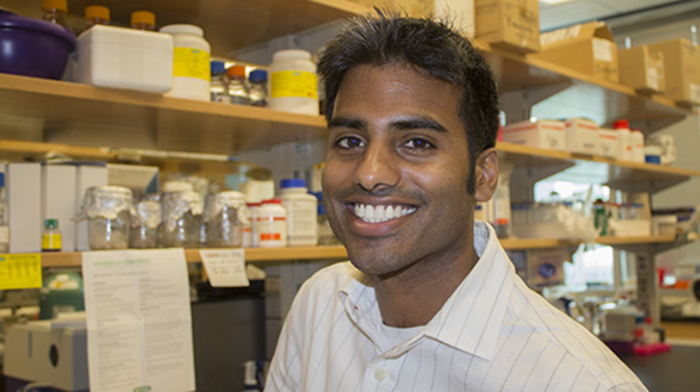Heme, the iron-holding molecule that gives blood its red color, is essential for life. Yet, ironically, it can be quite toxic if not properly handled. In fact, numerous diseases – from various cancers to cardiovascular diseases – are associated with defects in heme homeostasis.

Credit: Georgia Tech
Heme, the iron-holding molecule that gives blood its red color, is essential for life. Yet, ironically, it can be quite toxic if not properly handled. In fact, numerous diseases – from various cancers to cardiovascular diseases – are associated with defects in heme homeostasis.
The way heme is biosynthesized and degraded has been known for decades, but how it is mobilized from sites of synthesis and storage for use in cells has not been clear. Researchers at the Georgia Institute of Technology have developed new tools and approaches to image, monitor, and probe heme in biological systems to study how organisms handle this essential but potentially cytotoxic metabolite. Their findings are published in the journal Nature.
In a collaboration with Zhejiang University and the University of Maryland School of Medicine, the research team discovered a previously uncharacterized protein, HRG-9 (also called TANGO2), that helps to mobilize heme from sites of synthesis or storage for use in metabolism. The discovery of a new protein that ensures heme is made bio-available may serve as a new therapeutic target in many disease contexts – either to limit heme, to starve cells of this essential nutrient, or to cause heme to over accumulate and render it toxic to cells.
“Since mutations in the TANGO2 gene cause a hereditary disease characterized by developmental delays and defects in metabolism, our finding that TANGO2 plays a role in heme homeostasis suggests that the development of heme-centered therapies may treat such diseases,” said Amit Reddi, associate professor in the School of Chemistry at Georgia Tech and co-PI on the paper.
The researchers hope that understanding the mechanisms of heme trafficking will provide clues about how such ‘essential toxins’ are safely trafficked throughout the cell. It could also inspire therapeutic strategies to treat diseases associated with heme dysregulation, including anemias, porphyrias, and certain neurodegenerative and cardiovascular disorders.
Citation
Sun, F., Zhao, Z., Willoughby, M.M. et al. HRG-9 homologues regulate haem trafficking from haem-enriched compartments. Nature (2022). https://doi.org/10.1038/s41586-022-05347-z
Journal
Nature
DOI
10.1038/s41586-022-05347-z
Method of Research
Observational study
Subject of Research
Cells
Article Title
HRG-9 homologues regulate haem trafficking from haem-enriched compartments.
Article Publication Date
19-Oct-2022




